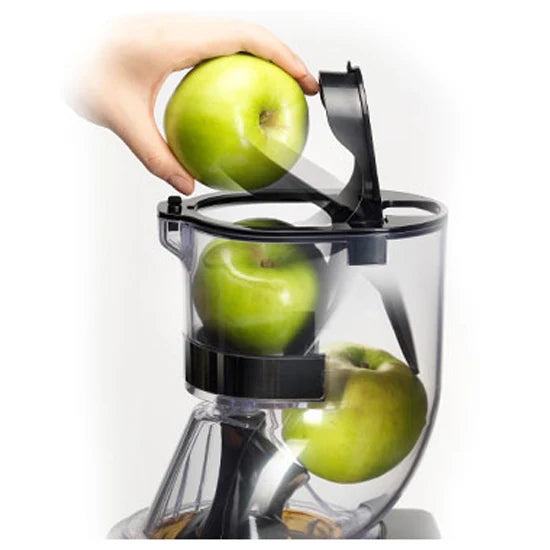3 Ways to Juice Watermelon
The three ways you can juice watermelon is with just the flesh, just the rind, and both the flesh and rind. Watermelon, a versatile fruit, offers more than just its delicious flesh for consumption. While juicing the flesh alone is a popular choice, it's worth exploring two other methods to extract the delightful flavors from other parts of the watermelon. Here are the three ways you can juice
🍉Watermelon:
- Flesh only
- Rind only
- Flesh and rind
These methods have been tested with our Kuvings Whole Slow Juicers Collection. Other juicers may not be able to handle juicing watermelon rind, so please proceed with caution or refrain from trying the latter two methods.
Flesh Only

The most popular method of juicing watermelon is by extracting juice from the sweet red flesh, which is the part we typically consume. Not only does the flesh offer a deliciously sweet flavor, but it also aids in hydration due to watermelon's high water content of 92% and its electrolyte content. Additionally, watermelon flesh is an excellent natural source of lycopene, containing approximately 40% more lycopene than raw tomatoes. By juicing solely the flesh, you'll obtain a vibrant red juice with a consistent color.
Rind Only
This method might make you lose your “rind”, but yes, you can juice the watermelon rind on its own. Juicing only the rind is a great way to reduce waste if you want to eat watermelon flesh normally. Watermelon rind also offers a host of health benefits. Packed with essential nutrients like vitamin C, vitamin A, vitamin B6, potassium, and zinc, watermelon rind is a low-calorie powerhouse. Additionally, it boasts an abundance of chlorophyll, citrulline, amino acids, flavonoids, and phenolic compounds, making it a nutrient-dense addition to your daily routine.

If you are concerned that the rind is so hard that it will break your Kuvings slow juicer, do not worry. Kuvings Whole Slow Juicers have no trouble with watermelon rinds and juice them easily. The juicer may be a bit louder as the screw will have to put in a bit more work to chop and crush the rind, but you will see that the juicer produces pulp and juice in no time.
Do be warned that watermelon rind juice is not as sweet as watermelon flesh juice. Just like most outer layers of fruits and vegetables, watermelon rind is slightly bitter but not extremely unpalatable. As for the juice's color, it will more or less be green, but the shade heavily depends on the color of your watermelon rind. In the following video, the rind is very green so it produced a beautiful green color.
Flesh and Rind

Juicing the whole watermelon lets you have the health benefits of all parts of the watermelon. Plus, it is less produce waste, less preparation, and easier clean-up. All you have to do is chop your watermelon, no need to separate anything from each other. Also, the combination of watermelon's high water content, soft flesh, and hard rind means all the pulp gets pushed through the juicer easily, leaving little residue in the juicing strainer and bowl.

In terms of taste, whole watermelon juice does have the sweet flavors of watermelon but is watered down with a hint of bitterness. This combination is perfect for people who love the flavor of the watermelon flesh but do not necessarily want all the sweetness. The color of the juice is not as vibrant as watermelon flesh juice; it has a darker red, almost brown color. Over time, you may start to see two different colored layers in the juice. This is not separation caused by oxidation but separation caused by the different densities of the particles in the rind and flesh.
All three methods have their pros and cons, but hopefully one fits you and your juicer. Let us know if you try any of these methods and how you like it on our Instagram and Facebook.




























